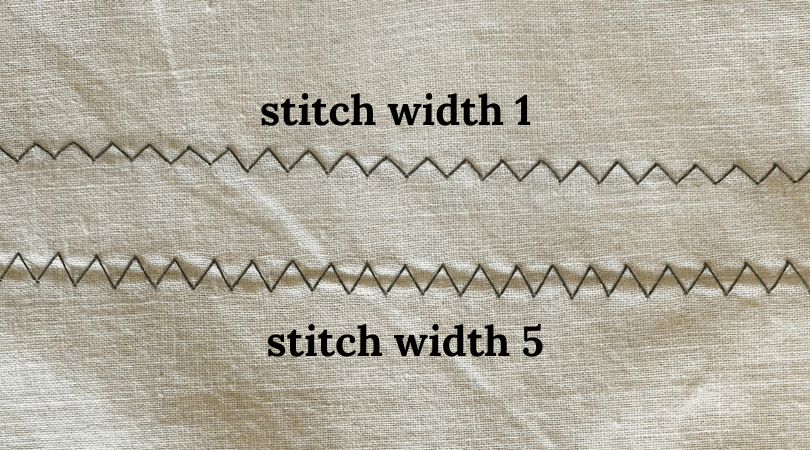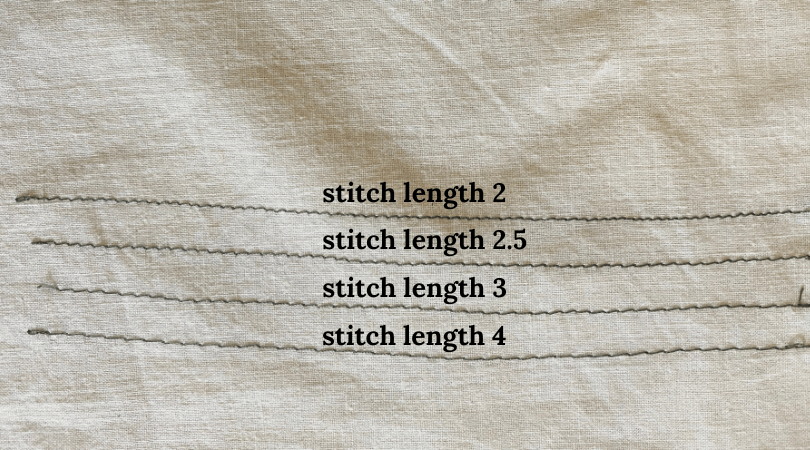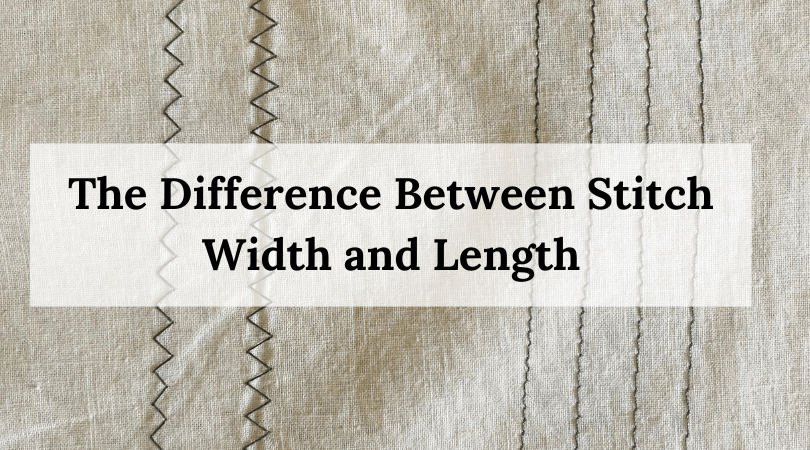While there is a standard stitch width and length, sometimes it’s necessary to adjust it to achieve the best end result in your sewing project. Just about every sewing machine, whether it is digital or not, has settings to adjust the stitch width and length.
You can adjust both stitch width and length on most sewing machines to achieve different stitching effects depending on the type of fabric being sewn and the desired result. You can check the sewing machine’s manual to understand how to adjust these settings correctly for best results.

What is Stitch Width?
Stitch width refers to the distance between the needle and the outer edge of the stitch. In other words, it controls how far the needle moves from side to side as it sews. This setting is usually used when sewing zigzag stitches or decorative stitches that require a wider stitch pattern.
For example, when sewing elastic down with a zigzag stitch, you want to make sure that the stitches aren’t so wide that they miss piercing the elastic and sewing it down.
What is Stitch Length?
Stitch length, on the other hand, refers to the distance between each stitch along the length of the fabric. It controls how long or short each stitch is. A shorter stitch length produces a denser stitch with less visible space between the stitches, while a longer stitch length produces a more visible and looser stitch.

Different stitch lengths are needed depending on the purpose of the straight stitch needed for a particular project. Here are some examples:
Straight stitch
For a straight stitch, the stitch length is set to a medium length, typically around 2.5mm, depending on the fabric being used. This includes the quilting stitch.
When sewing your own cloth incontinence products, a standard straight stitch gets used for the majority of the sewing.
Basting stitch
A basting stitch is a temporary stitch used to hold fabric layers together before final stitching. The stitch length is set to a longer length, often the longest length allowed on your sewing machine, 4mm or higher.
When making cloth incontinence products, the basting stitch is used to hold the layers of fabric together at the waist before sewing down elastic or a casing for the waistband.
Topstitching
Topstitching gets used for decorative stitching or to secure fabric edges by sewing ¼” from the edge of a product.. The stitch length is set to a longer length, typically between 3 and 4 mm.
Topstitching around the outside edges of cloth diapers and other incontinence products helps keep fabric from shifting and gives the finish product a nice, clean look.
Gathering
Gathering stitches are used to create ruffles or to fit a piece of fabric into a smaller area. The stitch length is set to a longer length, typically around 4mm.
Reinforcement stitching
Reinforcement stitching works to strengthen seams or areas of a garment that may undergo stress or strain. The stitch length is set to a shorter length, typically around 2mm.
I like to use a reinforcement stitch when sewing the sidebands on a pull up since these seams have to withstand being stretched around the body.
How to Adjust Stitch Length and Width
While every sewing machine is a little different, particularly those that have a digital screen, each machine has a way to adjust the stitch width and length.
However, oftentimes the knob to adjust stitch width is placed near the top of the machine, while the wheel to adjust the stitch width is placed near the stitch selector knob.
On a digital machine, buttons with plus and minus signs may be visible to manually adjust the stitch width and length. Refer to your specific machine manual for detail.
Alecia
Latest posts by Alecia (see all)
- How to Make a Cloth Diaper Bigger - August 21, 2023
- Best Swim Diapers for Adults and Youth - July 18, 2023
- Adult Cloth Diaper Hacks: How to Make a Swim Diaper - July 14, 2023


